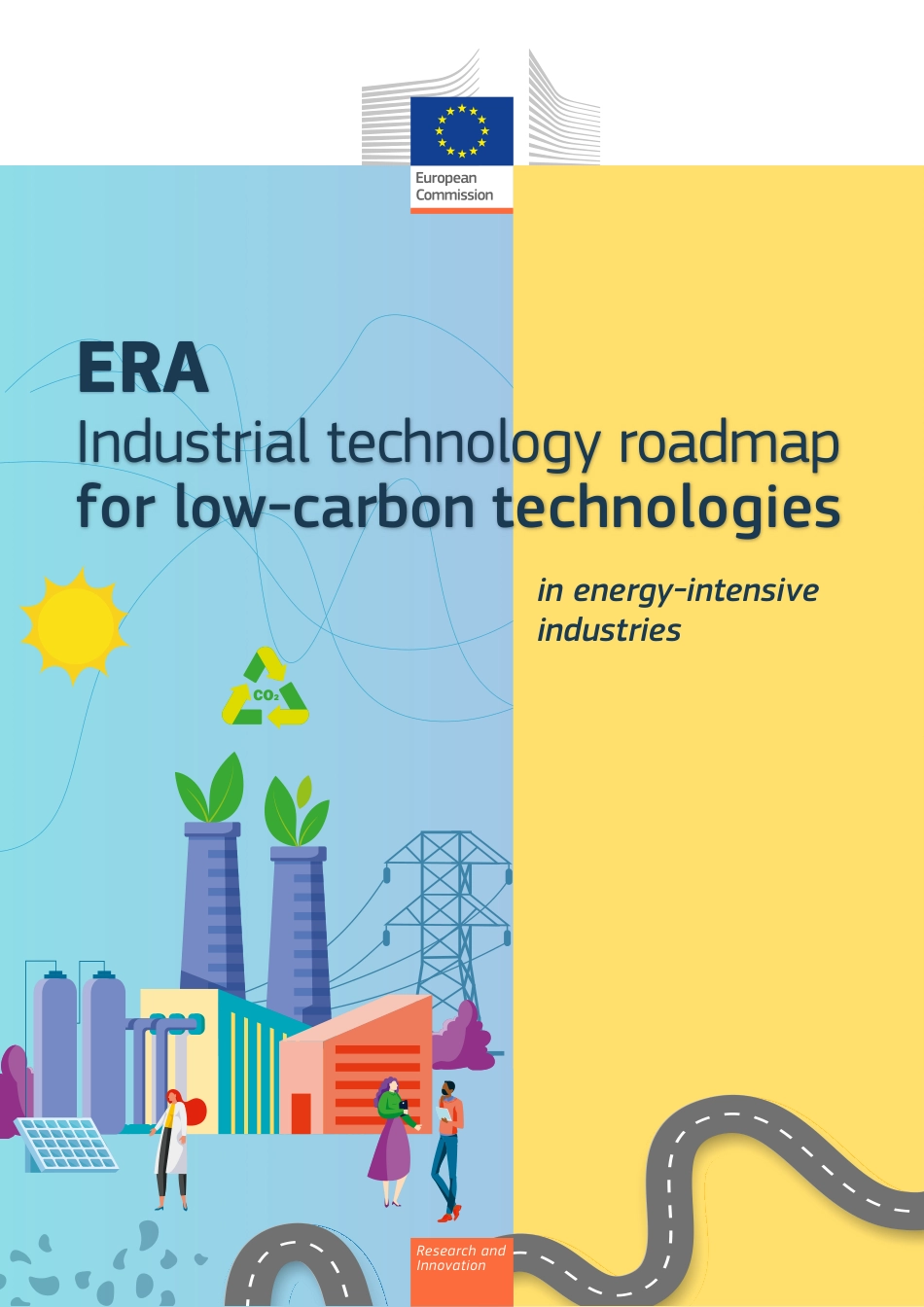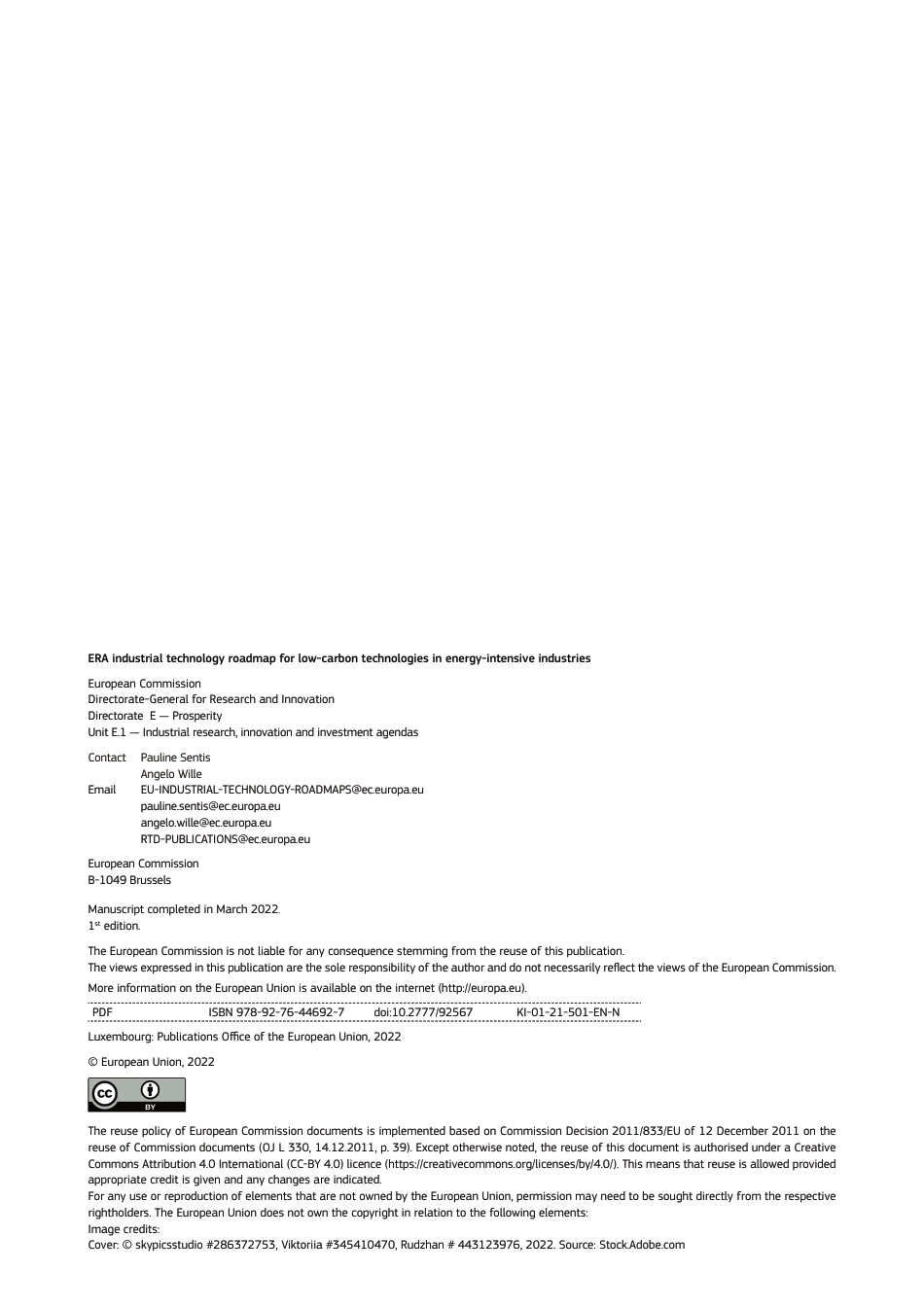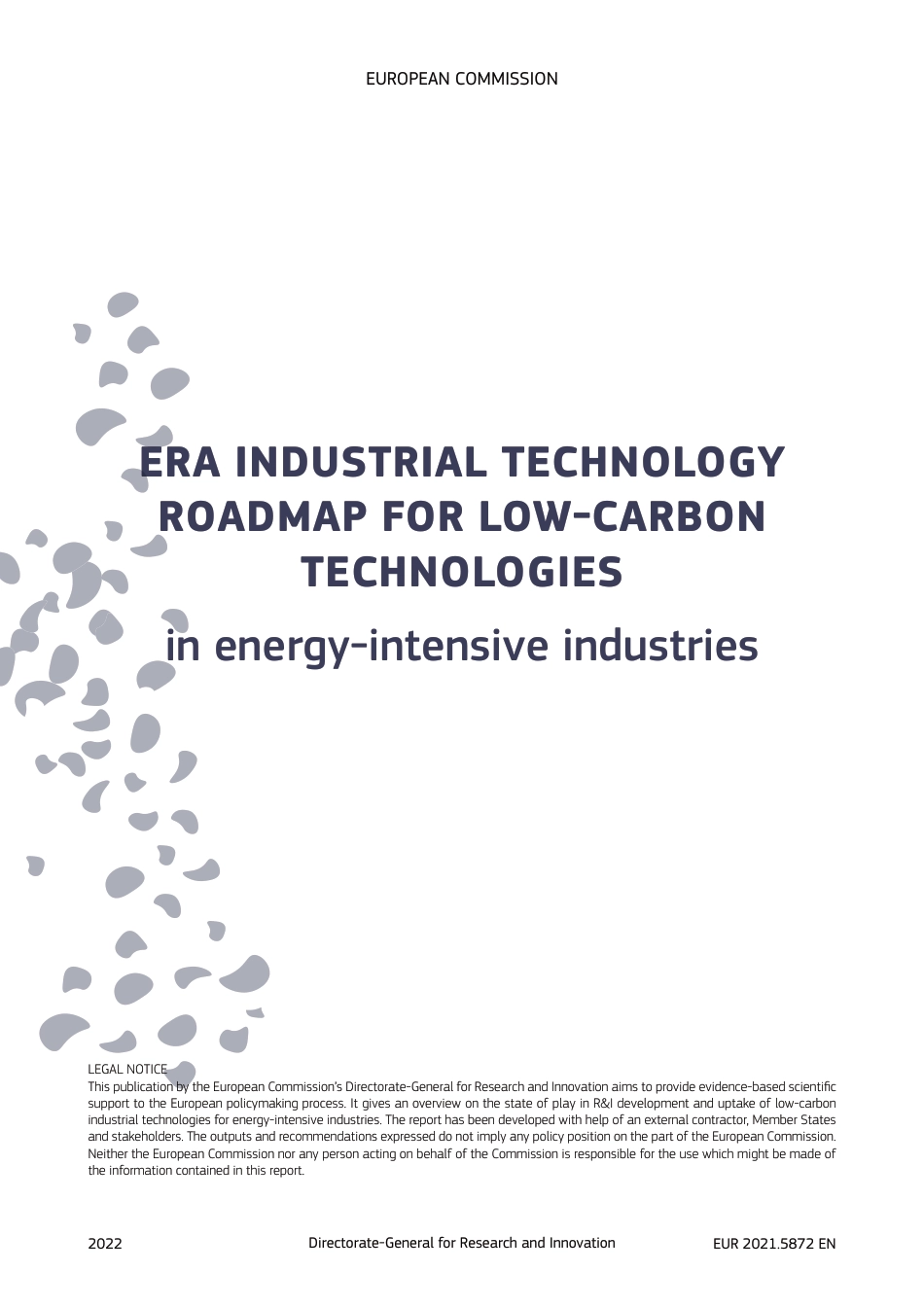Research and Innovation Industrial technology roadmapERAin energy-intensive industriesfor low-carbon technologiesERA industrial technology roadmap for low-carbon technologies in energy-intensive industriesEuropean CommissionDirectorate-General for Research and InnovationDirectorate E — ProsperityUnit E.1 — Industrial research, innovation and investment agendasContact Pauline Sentis Angelo Wille Email EU-INDUSTRIAL-TECHNOLOGY-ROADMAPS@ec.europa.eu pauline.sentis@ec.europa.eu angelo.wille@ec.europa.eu RTD-PUBLICATIONS@ec.europa.euEuropean CommissionB-1049 BrusselsManuscript completed in March 2022. 1st edition.The European Commission is not liable for any consequence stemming from the reuse of this publication. The views expressed in this publication are the sole responsibility of the author and do not necessarily reflect the views of the European Commission.More information on the European Union is available on the internet (http://europa.eu).PDFISBN 978-92-76-44692-7doi:10.2777/92567KI-01-21-501-EN-NLuxembourg: Publications Office of the European Union, 2022 © European Union, 2022The reuse policy of European Commission documents is implemented based on Commission Decision 2011/833/EU of 12 December 2011 on the reuse of Commission documents (OJ L 330, 14.12.2011, p. 39). Except otherwise noted, the reuse of this document is authorised under a Creative Commons Attribution 4.0 International (CC-BY 4.0) licence (https://creativecommons.org/licenses/by/4.0/). This means that reuse is allowed provided appropriate credit is given and any changes are indicated.For any use or reproduction of elements that are not owned by the European Union, permission may need to be sought directly from the respective rightholders. The European Union does not own the copyright...



